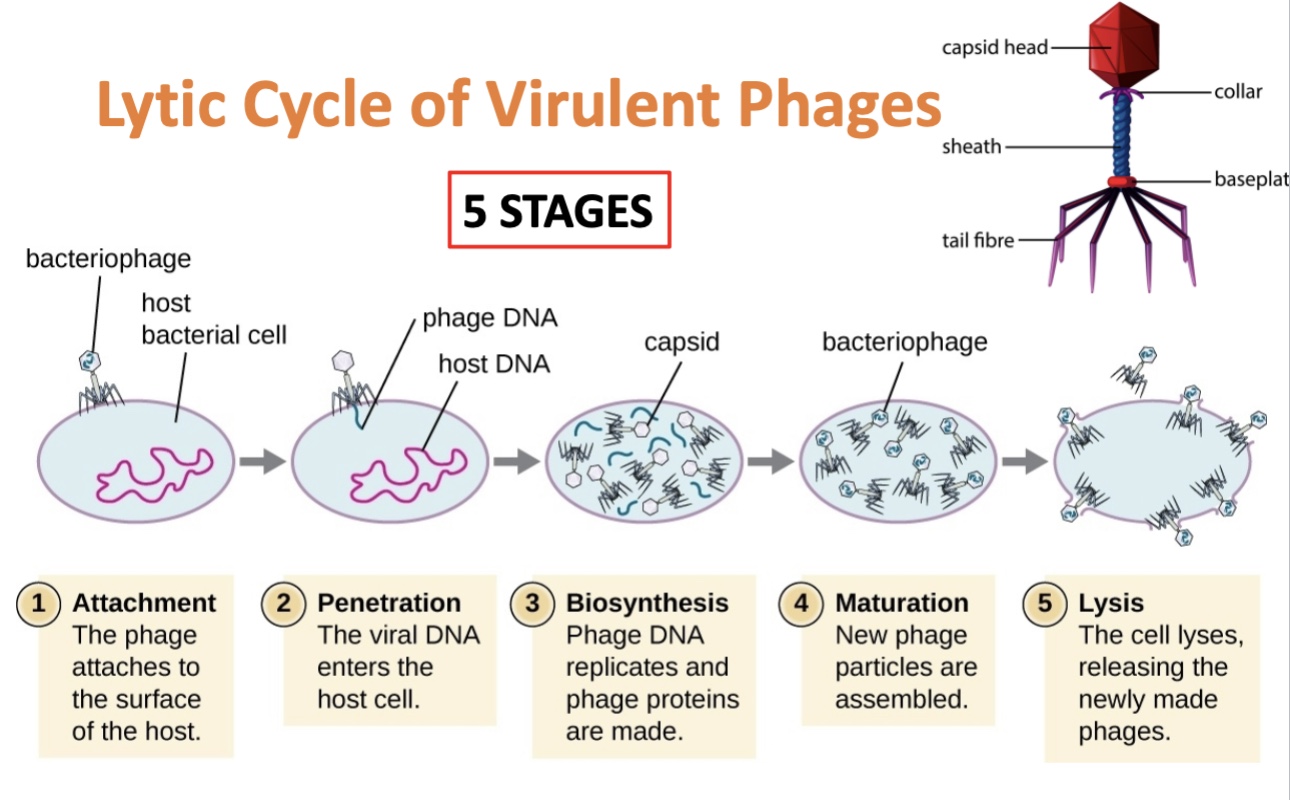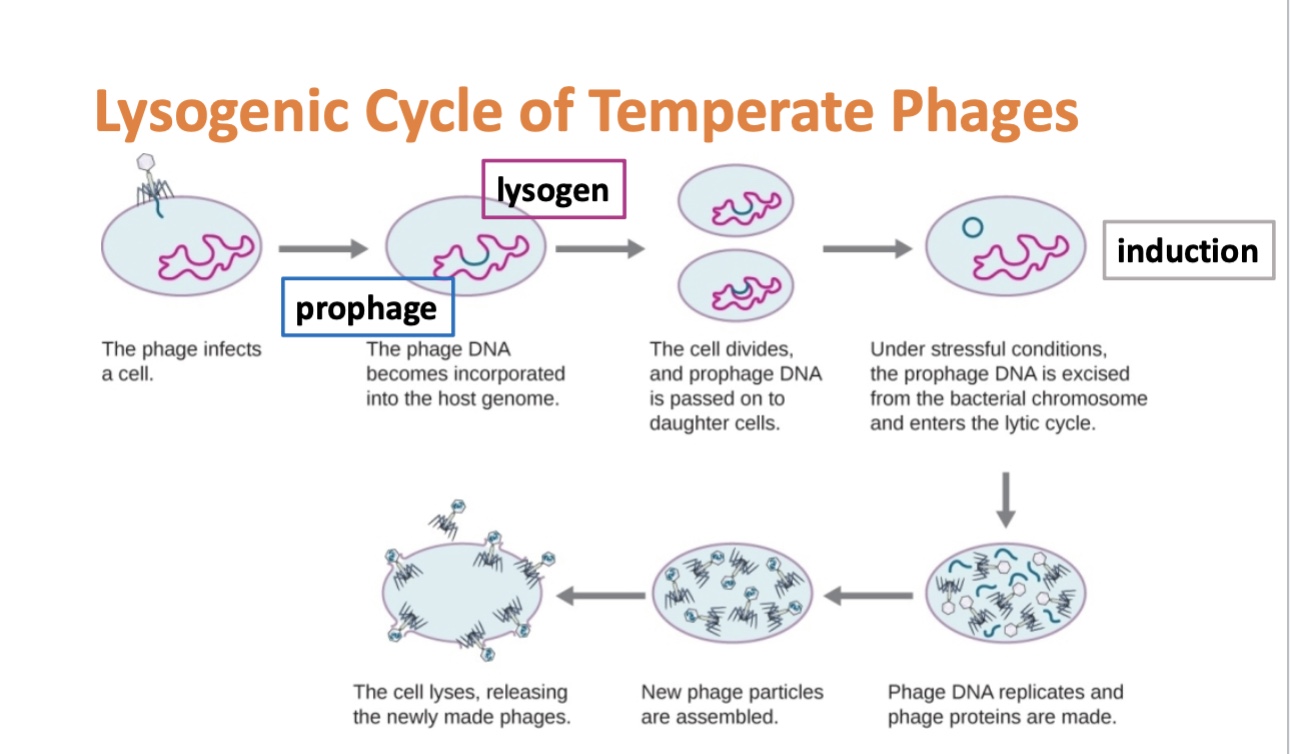BIOL 2460 Chapter 6 - Tagged
1/39
There's no tags or description
Looks like no tags are added yet.
Name | Mastery | Learn | Test | Matching | Spaced |
|---|
No study sessions yet.
40 Terms
Pathogens that do not have cell(s), can be seen via TEM or SEM, and possess genetic material; includes viruses, viroids, virusoids, and prions.
Acellular obligate intracellular parasites that hijack host cellular machinery to reproduce (virions) and do not belong to the tree of life.
what are componects of viruses
components of viruses include; capsid (capsomere subunit), genomic material (RNA or DNA), envelope (if present), and spikes (protein if present)
Bacteriophage infection can only be obtained via…
Direct contact (infected individual), Fomite (eating utensil, doorknobs, bedding etc), Mechanical vector - organism carries virus inside (ticks,mosquitos, bitting flies,etc)
what are virons ?
viral particles assembled in infected host host cell, with a ranging size of 20nm - 900nm
Infectious agents consisting of misfolded proteins that cause other proteins to misfold, leading to diseases like mad cow disease, and CJD.
how are prions transmitted ?
transmitted between animals, animals to humans (via consumption of meat), and human to human via heredity. IT’S ALSO VERY DIFFICULT TO DESTROY (no treatment)
A diagnostic method for detecting unique viral sequences, commonly using PCR (polymerase chain reaction).
Difference between enveloped viruses and naked viruses
Enveloped viruses have an outer lipid membrane derived from the host cell, which helps them evade the immune system, while naked viruses lack this envelope and are generally more resistant to environmental conditions.
ICD (International Classification of Diseases)
A standardized system used to classify and code diseases, symptoms, and procedures for health management and statistics, aiding in diagnosis, treatment, and the collection of epidemiological data.
Virulent Phages
Phages that exclusively follow the lytic cycle. Steps include: 1. Attachment to the host cell. 2. Injection of phage DNA. 3. Replication of phage components. 4. Assembly of new phage particles. 5. Lysis of the host cell to release the new virions.

Temperate Phages
Phages that can exist in a lysogenic cycle, with the following steps: 1. Attachment to the host cell. 2. Injection of phage DNA. 3. Integration of phage DNA into host genome (prophage state). 4. Replication of host cell with prophage until induction occurs, triggering the switch to the lytic cycle.

Generalized Transduction
DNA is random when transferred during lytic cycle
Specialized Transduction
occurs at the end of lysogenic cycle and can go transfer host DNA
Retrovirus
uses reverse transcriptase enzyme to synthesize cmplementary ssDNA (cDNA) from +ssRNA template (RNA to DNA)
what is bacteriophages and what are it’s steps
Bacteriophages are viruses that specifically infect bacteria, it’s steps include; inoculation (virus causes infection), eclipse (virus with no virions binds and penetrates), burst (virions released from lysed host cell), and burst size (release).
viral detection can be determined by
effects on host cells, hemagglutination assay, nucleic acid test, enzyme immunoassay
Cytopathic effects
cell abnormalities due to viral infections, such as changes in cell shape, shrinkage of nucleus, or loss of adhearence. fusion of cytoplasmic membrane forming multiple nuclei, and cell lysis.
Cytopathic effects of Paramyxovirus
Paramyxovirus can lead to cell fusion, forming syncytia, and cause local inflammation and cell death.
Cytopathic effects of Poxvirus
Poxvirus induces cytoplasmic effects resulting in cell lysis and necrosis, characterized by the formation of lesions.
Cytopathic effects of Herpesvirus
Herpesvirus causes lysis of infected cells, induces the formation of multinucleated giant cells, and can lead to latent infections.
Cytopathic effects of Adenovirus
Adenovirus triggers rounding of cells, cell death, and necrosis primarily in epithelial tissues.
hemagglutination Assay
detection of virus from patien serum, observes clumping (agglunation) of red blood cell, can be done without a microscope, viruses attach to RBC’s via spikes
what are EIAs
Enzyme Immunoassays (EIAs) are laboratory techniques used to detect and quantify proteins, hormones, or antibodies in a sample by using enzyme-linked ImmunoAssay (ELISA) and a substrate that produces a measurable signal.